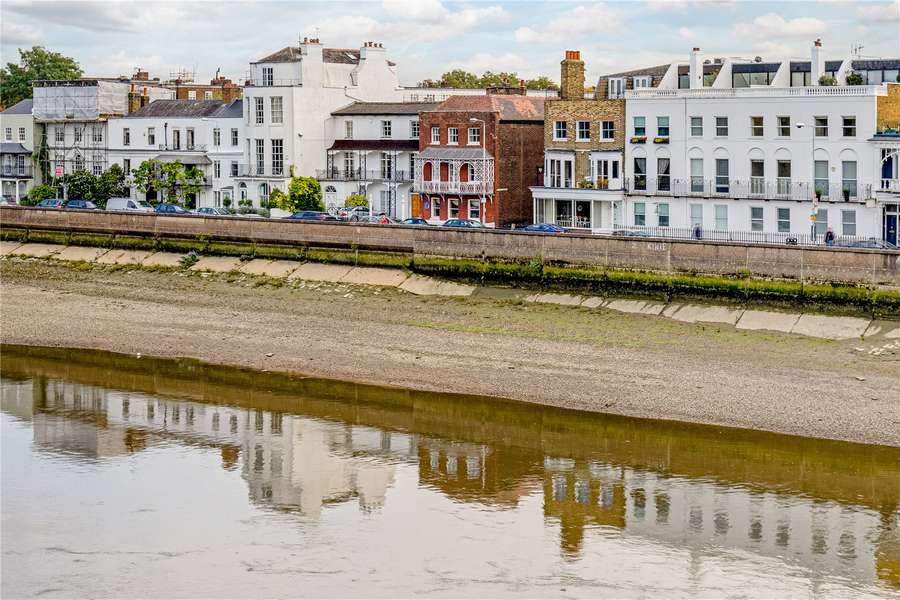Navigating Richmond Barnes Common Building Regulations: A Fresh Insight
Richmond Barnes Common is a picturesque and historically rich area, home to lush green spaces, charming residential properties, and areas of immense architectural value. Whether you’re an architect, developer, homeowner, or property enthusiast, understanding the building regulations specific to this region is crucial for ensuring your construction projects align with local laws and preserve the charm of this unique corner of London. In this article, we will explore the building regulations for Richmond Barnes Common, offering a fresh perspective on what you need to know when planning construction or renovation projects in this area.
What Makes Richmond Barnes Common Building Regulations Unique?
Richmond Barnes Common is a coveted part of London, known for its balance of suburban tranquillity and urban accessibility. This area, characterized by its vast green space, listed buildings, and a mix of modern and traditional homes, demands building regulations that reflect its rich history and environmental priorities. Unlike other parts of London, Richmond Barnes Common stands out because of its blend of heritage and natural beauty, influencing everything from the materials used in construction to the way new buildings are integrated into the landscape.
The area’s proximity to Barnes Common, which is a designated conservation area, further complicates the process of adhering to building regulations. Whether you’re undertaking a minor renovation or a large-scale development, your project will need to consider the broader impact on the surroundings, from aesthetic considerations to environmental sustainability. It is therefore essential to understand the nuances of these regulations in a way that respects the area’s cultural and ecological character.
Key Components of Richmond Barnes Common Building Regulations
- Integrating Heritage with Modern Construction
One of the most striking features of the Richmond Barnes Common area is its rich architectural heritage. The area is home to a diverse range of buildings, including Victorian homes, Edwardian houses, and several listed buildings. Building regulations for such sites are particularly focused on ensuring that any new work is sympathetic to the existing structures. For instance, alterations to listed buildings or properties within conservation areas need to undergo a more rigorous planning process, including historical and architectural assessments. The aim is to balance the preservation of the past with the needs of modern living, using materials and techniques that complement the historic character of the neighborhood. - Environmentally Conscious Development
With an increasing global focus on environmental sustainability, Richmond Barnes Common building regulations emphasize the need for eco-friendly construction practices. The area benefits from a variety of green spaces, including Barnes Common, and the regulations ensure that new developments minimize their environmental footprint. Whether you are building a new home or an extension, your project must meet stringent energy-efficiency requirements. This includes high-performance insulation, energy-efficient windows, and sustainable heating solutions such as solar panels and heat pumps. Sustainable waste management practices and rainwater harvesting systems are also encouraged to ensure that the area’s environmental integrity is preserved. - Structural Safety and Resilience
The safety of buildings is paramount in any construction project, but Richmond Barnes Common regulations go a step further by requiring additional measures to ensure buildings are resilient against climate impacts. In this area, heavy rainfall, occasional flooding, and the risk of subsidence in certain parts require careful consideration during the planning and design phases. As such, the regulations often require flood risk assessments and the implementation of drainage solutions that protect both the property and the surrounding community. Structural integrity assessments are mandatory, especially for projects involving basement conversions, loft extensions, or major refurbishments. - Energy Efficiency in the Heart of Richmond
The Richmond area, including Barnes Common, is increasingly becoming a hub for energy-conscious developments. New builds and major refurbishments must meet high standards of energy performance. This includes minimizing heat loss through insulation, utilizing renewable energy sources, and employing modern construction techniques that promote sustainability. The building regulations require the installation of efficient heating systems such as condensing boilers, underfloor heating, and low-energy lighting. Additionally, all new properties must adhere to the UK’s carbon emissions reduction goals, ensuring a sustainable and greener future for the community. - Safety and Accessibility for All
Building regulations in Richmond Barnes Common prioritize not only the safety of the residents but also the accessibility of the building for all members of the community. The area’s mix of residential and public spaces means that buildings must be designed with accessibility in mind, from wheelchair ramps to wider doorways and accessible bathrooms. For larger developments, ensuring compliance with the Equality Act (2010) is a crucial part of the planning process. Developers must ensure that any new construction or modification accommodates a diverse range of physical abilities, allowing all individuals to safely and comfortably access public spaces. - Stormwater Management and Drainage
Given Richmond’s proximity to Barnes Common and various natural water sources, drainage plays a key role in local building regulations. Proper stormwater management is critical in mitigating the risk of flooding, especially in low-lying areas. Richmond Barnes Common regulations mandate the use of sustainable urban drainage systems (SUDS) to ensure that runoff is properly managed. These systems help slow down the flow of rainwater and allow it to be absorbed back into the ground, reducing the strain on local drainage networks and protecting the surrounding green spaces. - Noise Pollution and Site Impact
Richmond is home to a diverse community, including families, retirees, and young professionals, all of whom value the peace and quiet of the area. Building regulations in this part of London often include guidelines to minimize noise pollution during construction. For example, construction work is typically restricted to certain hours to avoid disturbing the local community. In addition, developers may be required to use soundproofing materials or techniques, particularly if the project is located near residential areas or schools. These regulations aim to preserve the tranquil nature of the Richmond Barnes Common neighborhood, ensuring minimal disruption to residents.
The Planning and Approval Process
Undertaking a construction project in Richmond Barnes Common requires navigating through several stages of approval. Below are the main steps involved:
- Pre-Application Consultation
Before submitting an official application, it is advisable to consult with the Richmond Planning Department and relevant local authorities. Pre-application advice can help you better understand local expectations and address any potential challenges before embarking on the design and construction phases. This advice is especially useful if your project is located within a conservation area or involves a listed building. - Submission of Plans
Once your plans are finalized, you must submit them to the local council for review. This includes both planning permission applications (for aesthetic and usage changes) and building regulations approval (for technical and safety matters). The local council will examine your plans for compliance with the established regulations, including structural safety, energy efficiency, and environmental sustainability. - Site Inspections
During the construction process, your project will be subject to periodic site inspections by building control officers. These inspections ensure that the work is progressing according to the approved plans and that safety standards are being met. Any deviations from the approved plans must be addressed promptly. - Completion Certificate
After the completion of your project, the final inspection will take place. If the building passes all regulatory checks, you will receive a completion certificate, confirming that the work complies with the necessary standards. This document is essential for the legal use of the building.
Conclusion: Building Responsibly in Richmond Barnes Common
Richmond Barnes Common is a dynamic area with its own set of challenges and opportunities when it comes to construction. The unique combination of heritage, natural beauty, and modern development requires building regulations that safeguard the community while embracing progress. By following these regulations and respecting the local environment, developers, homeowners, and businesses can contribute to the continued growth and success of this charming and vibrant part of London. Whether you’re planning a small extension or a larger-scale development, understanding and adhering to Richmond Barnes Common building regulations is the first step towards a successful, sustainable project.



No responses yet